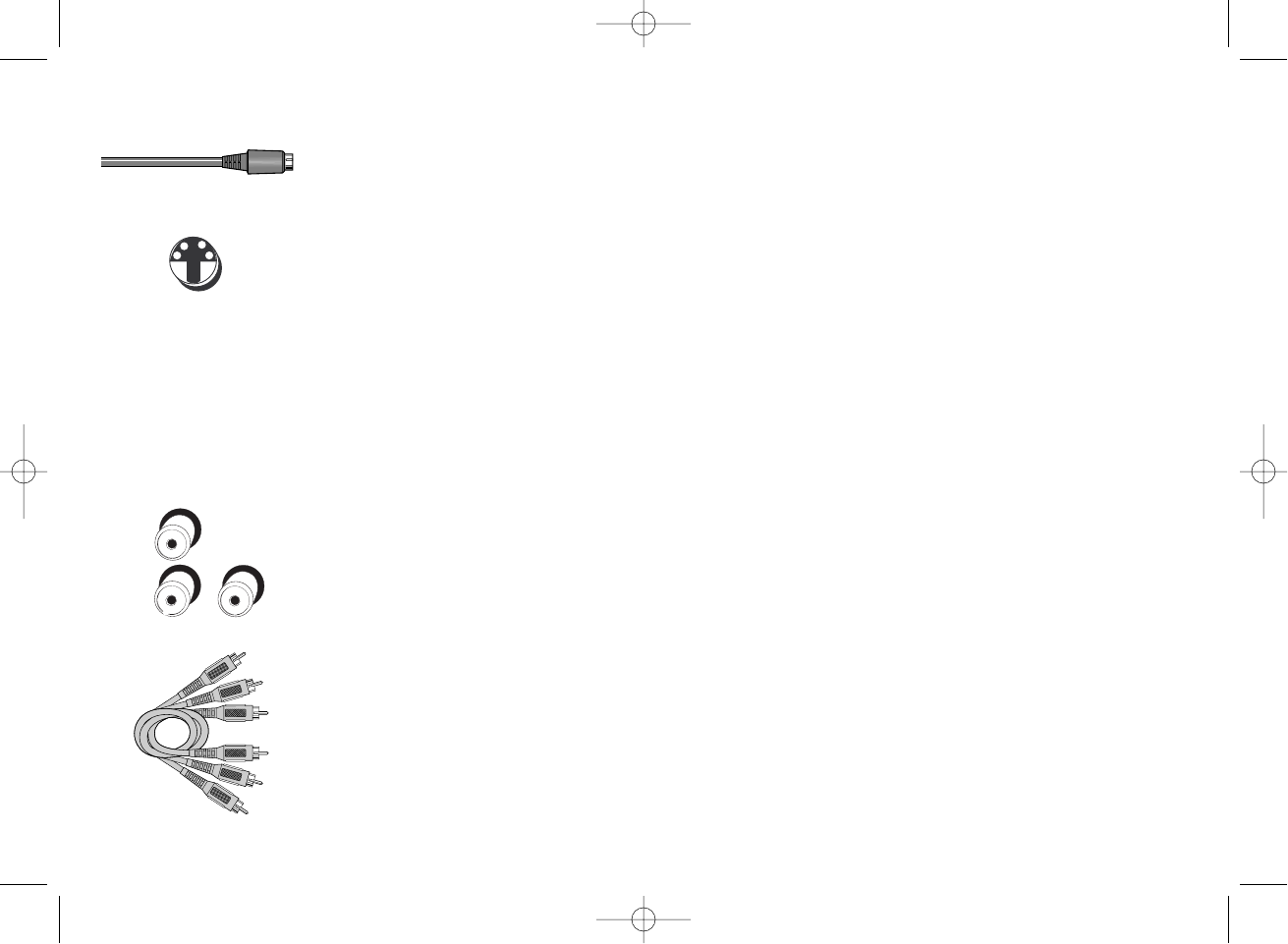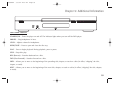
57
Chapter 5: Additional Information
S-Video Jacks and Cables
The S-Video (separate video) jack provides better picture quality than a composite video jack
(sometimes labeled VIDEO and color-coded yellow) because S-Video keeps the color (chrominance, also
called chroma) part of the signal separate from the black and white (luminance) part of the picture.
S-Video cables are designed to keep the color information separated. If your TV has an S-VIDEO jack,
connect the DVD Player to the TV with an S-Video cable (not provided) for a better quality picture.
Note: Remember to connect the left and right audio cables because the S-Video cable carries only the picture
signal, not the sound.
Audio/Video Jacks and Cables (RCA-type)
Audio
These jacks are used to send the audio from the disc you’re playing in the DVD Player to the TV. The
audio jacks and cables are often color-coded (red for right audio, and white for left audio). You must
connect audio cables to the AUDIO L and R jacks on the DVD Player and the corresponding Audio
Input Jacks on the TV no matter which Video jack you connect (VIDEO; S-VIDEO; Y, Pb, Pr)
Note: If your component has only one input for audio (mono), connect it to the left (white L/Mono) audio jack
on the TV and don’t connect the right audio part of the cable.
Video
The basic Video jack (usually color-coded yellow) jack is also referred to as composite video.
Composite video doesn’t keep color information separated (like S-Video), but it’s better than the video
quality you get from an RF coaxial cable (the type used to plug the cable feed into a TV).
S-VIDEO
R
L
AUDIO
OUT
VIDEO
OUT
1590940A 3/7/02 9:22 AM Page 57


















